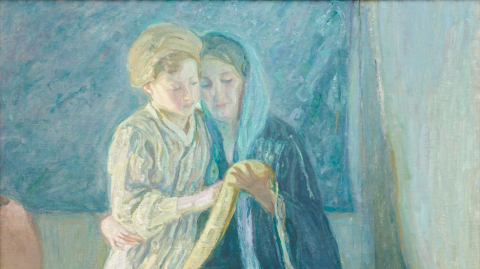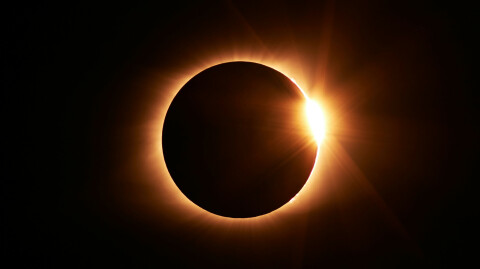TLDR: Two talented artists, John O'Donohue and Caravaggio converge together to help us navigate Holy Week.
It’s Holy Week. My feelings collide as I pour myself into learning, studying, and sharing with you the sufferings of our Lord. Often, images speak when words fall short. But images are enhanced when words are penned from one who bends the ink to fill the soul. I am offering you a combination of two talented artists, a writer and a painter. John O'Donohue and Michelangelo Merisi da Caravaggio- known mononymously as Caravaggio are skilled artisans who gifted the world with their creativity though they lived centuries apart.
I have shared thoughts with many painters along this blog journey and mentioned Caravaggio earlier. But I have not shared with you a writer who is of great inspiration, John O’Donohue: the priest, philosopher, and writer. If you are not acquainted with his work until now, I encouraged you to read then savor his writings as you would a delectable treat, one morsel at a time.
John O'Donohue, Ph.D., was born in County Clare, Ireland in 1956. O’Donohue was formerly a Catholic priest with a strong core of Celtic spirituality. His writing is poetic and wise. He spoke Irish as his native language and lived in a remote cottage in the west of Ireland until his untimely death in January 2008 at age 52. A highly respected poet and philosopher, he lectured throughout Europe and America and wrote a number of popular books, including Anam Cara, To Bless the Space Between Us, and Beauty, The Invisible Embrace.
I stumbled upon his book, Beauty, The Invisible Embrace: Rediscovering the True Sources of Compassion, Serenity, and Hope a few years ago. I became immediately drawn to his writing that opened my eyes to awaken to Beauty. He echoed many of the feelings inside my own heart that I simply could not articulate until I read his words.
Found in one of O’Donohue’s many obituaries, one author wrote, “His books, emerging every three or four years, were written in a kind of long-form, prayer style which was impossible to read quickly and did not work for everyone. They were the distinct product of a life often spent in meditation and solitude. Not that he was not a gregarious, fun-loving companion, and mesmerizing storyteller in the bar, but that his public presence grew from private silence. One of his great influences, the German mystic Meister Eckhart, believed that nothing resembles God like silence and O'Donohue suggested that the highly strung character of western life was explained by the absence of silence. "When you acknowledge the integrity of your solitude, and settle into its mystery, your relationships with others take on a new warmth, adventure and wonder."”
The article continued by quoting the book I reference here, “... Beauty: the Invisible Embrace took classical, medieval, and Celtic traditions to argue that we might be alive for reasons other than productivity or consumption. "When we hear some beautiful piece of Mozart or admire a wonderful building, we suddenly become present in ourselves," he said. "That's unusual nowadays because dishevelment and distraction have become an art form."”
In this book, Beauty: the Invisible Embrace, I found a brief treatise concerning the painting, The Denial of Peter by Caravaggio, which indeed is fitting for this Holy Week.
I simply had to share both of them with you.
The Color of Dark
by John O’Donohue
In the last months of his turbulent live, Caravaggio, (1571-1610) completed his extraordinary, dark painting, The Denial of Peter. It depicts Peter before a fireplace in the courtyard of the High Priest, where one of the women is accusing Peter, of being a follower of Christ. Two soldiers are also pointing their fingers at him, and Peter is denying the three accusations. The canvas is so dark; it has none of the beauty or the softness that color brings. It is a black painting of relentless and bleak, psychological portrait. The figures are shrouded in black and dark brown earth colors. The only light is meager and illuminates the faces of the accusers and the startled, helpless eyes of the old, bald Peter, the betrayer. His finger points at himself. He knows what he is doing. His brow is furrowed, and his eyes are wet with tears. His presence is not fearful but limp with resignation and shame; this contrasts with the alertness and vigor of his accusers. The betrayal of a friend, of a loved one, is an undignified, demeaning thing. Caravaggio’s powerful portraiture draws out the irreversible awfulness of the deed as the light of kindness and belonging fades in the encircling gloom. This is an incredible portrait of a moment when weakness killed beauty. This darkening gloom seems forever beyond the dream of Dawn.
There is such feeling in his words as O’Donohue describes the emotionally charged painting of Caravaggio. The line, “This is an incredible portrait of a moment when weakness killed beauty.” This the title of my blog. I had to stop and think through about my weakness, my self-centeredness which also killed the Beauty. This week together, we experience the gamut of feelings as we move through the Passion of our Lord. We walk with Peter into the courtyard. We flinch when the servant girl notices his accent. We smell the embers in the fire. We hear the distant rooster’s crowing and suddenly we feel the darkness.
And we wait.
More on John O’Donohue:
The interviewer and host of On Being, Krista Tippet said, “No conversation we’ve ever done has been more beloved than this one. The Irish poet, theologian, and philosopher insisted on beauty as a human calling. He had a very Celtic, lifelong fascination with the inner landscape of our lives and with what he called “the invisible world” that is constantly intertwining what we can know and see. This was one of the last interviews he gave before his unexpected death in 2008. But John O’Donohue’s voice and writings continue to bring ancient mystical wisdom to modern confusions and longings.”
https://onbeing.org/programs/john-odonohue-the-inner-landscape-of-beauty/
Rev. Leesa+
The Denial of Saint Peter (1610). Oil on canvas, 94 x 125.4 cm (37 x 49.3 in). Metropolitan Museum of Art, New York, https://www.metmuseum.org/art/collection/search/437986





